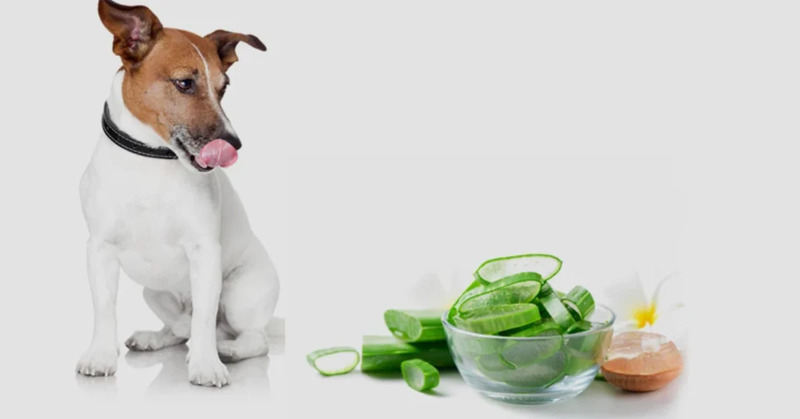Aloe plants are known for their medicinal and soothing properties, but they're not only appealing to humans. Various animals are attracted to aloe as a food source, either for its water content, nutrients, or simply because it’s available in their habitat. This article will explore which animals eat aloe, why they do so, and how to protect aloe plants from potential threats. Additionally, we will cover some fascinating insights about aloe's role in ecosystems and animal diets.

Aloe is a succulent plant that stores water in its leaves, making it a valuable source of hydration, especially in arid regions. Many animals are drawn to aloe for this reason, but they may also consume it for its nutrients, such as vitamins and minerals that help with digestion or health.
Aloe contains compounds such as:
Water: Aloe plants store a significant amount of water in their fleshy leaves, providing much-needed hydration to animals in dry climates.
Vitamins: Aloe is rich in vitamins A, C, and E, which act as antioxidants.
Enzymes: These help with the breakdown of sugars and fats, aiding digestion.
Amino acids: Aloe contains amino acids, essential building blocks for proteins.
These properties make aloe not just a survival plant for animals but also a beneficial part of their diets.
Insects are some of the primary consumers of aloe plants, particularly aphids and spider mites.
Aphids: These tiny insects pierce aloe leaves and suck out the sap. They can cause the plant to weaken over time.
Spider mites: Found in dry conditions, spider mites feed on aloe by draining the sap, which can result in leaf discoloration and damage.
Rodents such as rabbits and rats may consume aloe when other food sources are scarce. The water content in aloe makes it an appealing plant in arid areas where hydration is limited. In particular:
Rabbits: In dry environments, rabbits may nibble on aloe to quench their thirst. However, some rabbits might avoid it due to the bitter taste of the latex found in aloe leaves.
Rats and mice: These rodents may also feed on aloe plants in desert or dry habitats. They can chew through the leaves to access the moisture-rich gel inside.
Some species of tortoises, such as desert tortoises, are known to consume aloe as part of their diet. Aloe provides these tortoises with a vital source of moisture and nutrients, especially in regions with limited water sources.
Deer, particularly in areas where vegetation is sparse, may consume aloe plants. Though they prefer other foliage, aloe can be eaten when food options are limited, especially during dry seasons.
Goats are notorious for eating almost anything they come across, including aloe plants. If aloe grows in an area with free-roaming goats, it may quickly become part of their diet. Goats seem to tolerate the bitter taste of the plant’s latex, though they are more likely to chew on the gel-rich leaves.
Some birds, especially in desert regions, may peck at aloe leaves to access the water stored inside. Birds are less likely to eat aloe as a primary food source but may use it for hydration.
In certain parts of the world, wild pigs or boars may consume aloe plants. These animals are opportunistic feeders and may dig up aloe plants for the juicy leaves, especially when other water sources are scarce.
Aloe plants are native to arid and semi-arid regions, and their ability to store water makes them an essential part of these ecosystems. For animals living in such environments, aloe plants can be a critical source of hydration. In times of drought or food scarcity, animals turn to aloe for survival, making it a key plant in supporting wildlife in dry climates.
However, this reliance on aloe by certain animals can sometimes pose a threat to the plant itself. If too many animals feed on a single aloe plant, it may weaken and eventually die. This is why some aloe cultivators and gardeners work to protect their plants from animal predation.
If you are growing aloe plants and want to protect them from being eaten by animals, there are several methods you can try:
Install a physical barrier around your aloe plants to keep larger animals, such as deer and rodents, from reaching them. Simple wire mesh or garden fencing can effectively keep these animals at bay.
You can use natural repellents like pepper spray or commercial animal deterrents to discourage animals from munching on your aloe plants. Ensure that the repellent is safe for use on plants and won’t harm the aloe.
For smaller animals like birds and insects, using fine netting over the plants can prevent access while still allowing sunlight and water to reach the aloe.
Plant aloe near other plants that are less appealing to animals. For example, strong-smelling herbs like rosemary or lavender can act as a natural deterrent.
A variety of animals, from insects to larger mammals, eat aloe plants either for hydration, nutrition, or as a survival strategy in arid environments. While aloe's nutritional and medicinal properties are beneficial to animals, they can also pose a challenge for gardeners and aloe cultivators who want to protect their plants. Understanding the animals that feed on aloe and their motivations can help in implementing effective measures to keep aloe plants safe.
Aloe is not just a healing plant for humans, but also an essential resource for many animals in challenging habitats. Whether you're a nature enthusiast or an aloe grower, it's fascinating to observe how different species interact with this versatile plant in their ecosystems.
By learning more about what animals eat aloe and why, we gain insight into the broader relationships within ecosystems and can take steps to protect this important plant from unwanted animal attention.
animal tags:
We created this article in conjunction with AI technology, then made sure it was fact-checked and edited by a Animals Top editor.